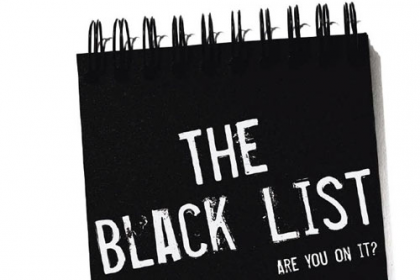
Questions about blacklists are not uncommon at Citirex, which is why we want you to be aware of a few things before you start to worry. Finding out that you are blacklisted sounds downright intimidating, but the problem is probably not as bad as you think. Keep in mind that some blacklists are more useful, and more used, than others and it is really the internet service providers (ISPs), or mailbox providers, that have the final call as to whether or not to block a blacklisted IP. Whether you are worried about your own blacklisted IP, or are simply looking for more information on blacklists in general, here is what you need to know.
What Are Blacklists, Really? A blacklist, sometimes also referred to as the blackhole list or blocklist, is pretty much what it sounds like- a list of IP addresses that, in theory, should be blocked because they are suspected of sending spam. No one likes spam, which is why these lists tend to be particularly useful to mailbox providers. The DNSBL or Domain Name System-Based Blackhole List, and the RBL or Real-Time Blackhole List are both systems for listing a given site’s IP address and domain name as a potential source of spam. DNSBL’s were first created in 1997 and have been used to help block spam emails from scammers and other malicious entities.
Do Blacklists Block Your Emails? Not exactly. The blacklists are simply a collection of questionable IP addresses or domain names. The final choice of whether or not emails are blocked rests with the mailbox providers rather than a given list. This means that your emails will not necessarily be blocked if your IP ends up on a blacklist- and some lists are definitely more important than others.
Blacklist Types: There are dozens of DNSBL’s in existence and while some are very reputable and well used, others are newer and questionable. It doesn’t take much to create a blacklist and some of the lists are even fraudulent. Fortunately, internet service providers and mailbox providers usually know what they are doing when they decide to block an address. Here are a few blackholes that you want to avoid.
- Spamhaus: This list is both reputable and global. Spamhaus services both large and small mail servers, making this one a blocklist one to avoid at all costs.
- Invaluement: Composed of ivmURI, ivmSIP and ivmSIP/24, this list covers a variety of spam and spam sites. While ivmUVR focuses on spam links specifically, ivmSIP and ivmSIP/24 protect from sites to entire ranges that emit spam. Between the three lists, Invaluement has pretty comprehensive coverage.
- Barracuda: This one is often used by corporations and are known to flag spammers and business to business messages alike. The Barracuda Reputation Block List or BRLB is free to use and has a great reputation for reliability. You definitely don’t want to end up on this blackhole list!
- SpamCop: This one is less of a traditional DNSBL and more of a recon and report. SpamCop tracks the origins of unwanted email based on user feedback and reports these to internet service providers. Unlike other databases, SpamCop does not keep a long term and comprehensive list for review.
- Passive Spam Block List: Also known as PSBL, the Passive Spam Block List uses Spamikaze software is set to trap spam sending IP addresses and zombie computers. The good news is that, if an IP is flagged by mistake, it can easily be removed from the PSBL.
- Lashback (Unsubscribe Black List)- While this is known for targeting spammers who have ignored unsubscribe requests, you may occasionally find more benign IP addresses listed here as well.
Avoiding the Blacklist: While even the best blackhole sites can make mistakes, you should make sure to keep your email program in good standing. There are a few ways to get blacklisted, but the most common scenario is having your email fall into a spam trap that is set by a blacklist operator. If your IP address is flagged, even by a minor blacklist, you definitely want to take some time to figure out the reasons. It is always good practice to make sure that people are initially opting into your emails, but you should also be aware that “opt in” permission can expire. This is where you need to be diligent about making sure that all of your email list only contains willing subscribers who have shown continued interest in what you are sending- a practice that is also known as list hygiene.
No one likes spam, and once listed, you do stand the chance of not having your emails delivered, which is why staying off blacklists is such an important practice. The good news, is that if you are blacklisted by mistake, you can usually ask to be removed from the black list once you have addressed any potential underlying issues. If you have no idea why you have been blacklisted or don’t know where to start with list hygiene maintenance, there is no need to panic. Not everyone is an email expert which is why it is always a good idea to contact the professionals at IntentMail when you feel stuck. Whether it is a conceptual question, or a serious blacklist matter, the experts at IntentMail can help you tackle all of your email needs!


